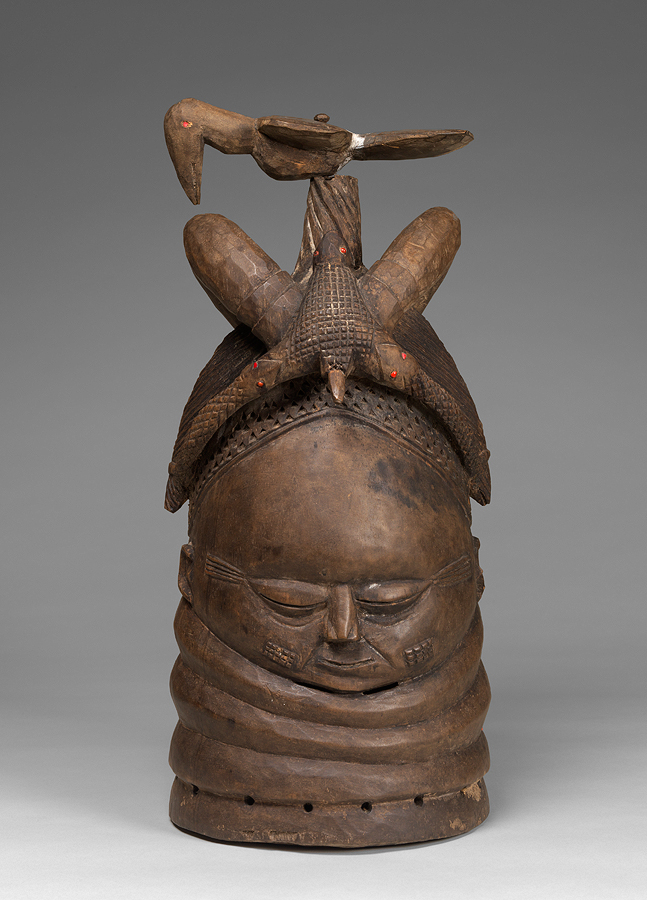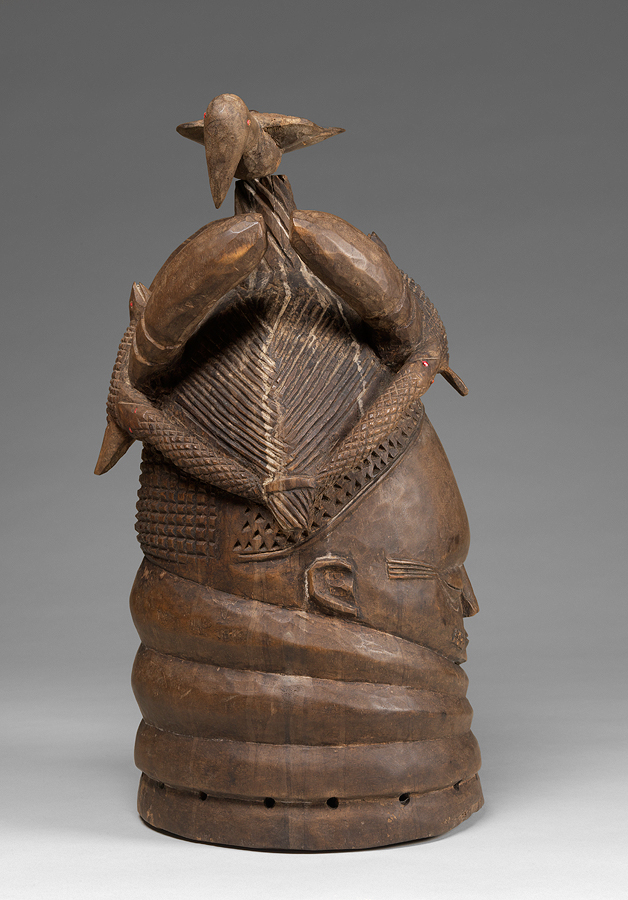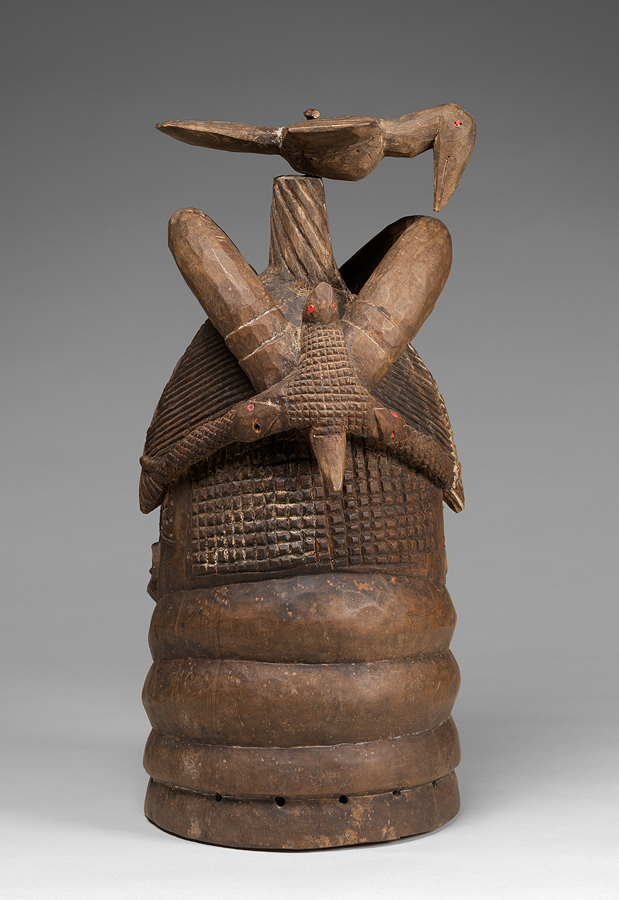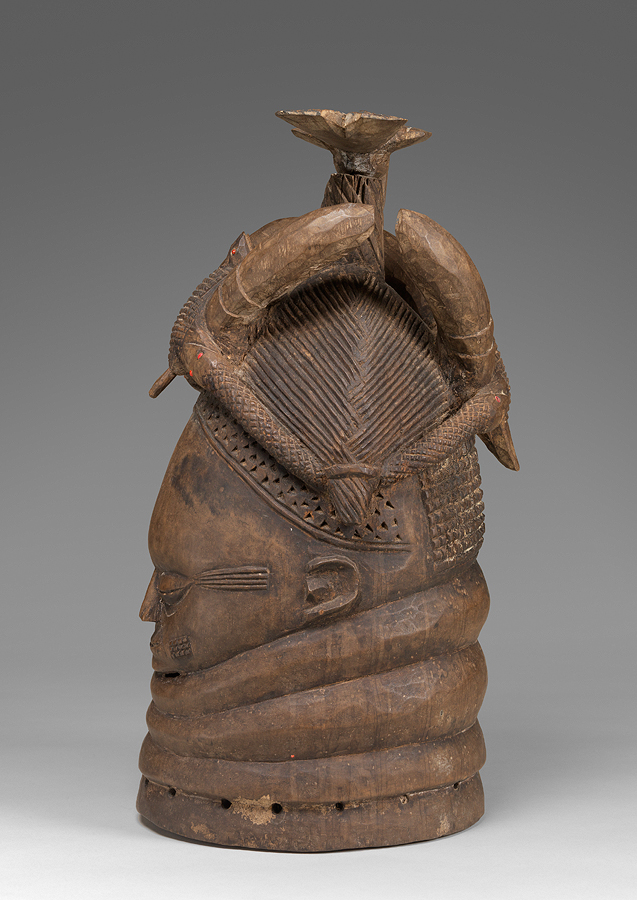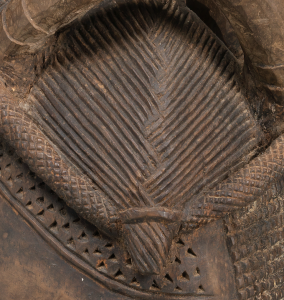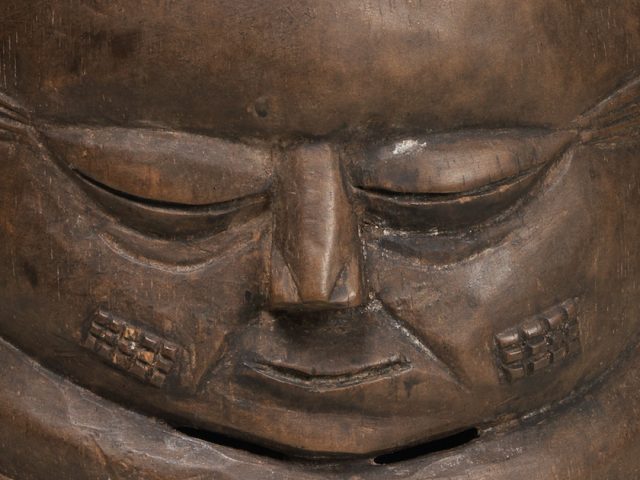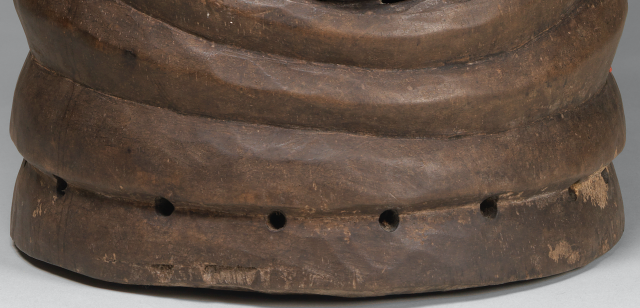Pessima (d. ca. 1980)
Sande Helmet Mask (Sowo-wui), Dance Mask of Ligba Rank (Ndoli Jowei)
Carved wood
Gift of Gwendolen M. Carter
[on view]
On June 24, 1960, Gwendolen M. Carter, a Government professor at Smith College wrote to SCMA about donating the helmet mask from Sierra Leone to the museum because she felt that it “is more suitable” in the SCMA collection to be part of a “very promising collection of African art.”
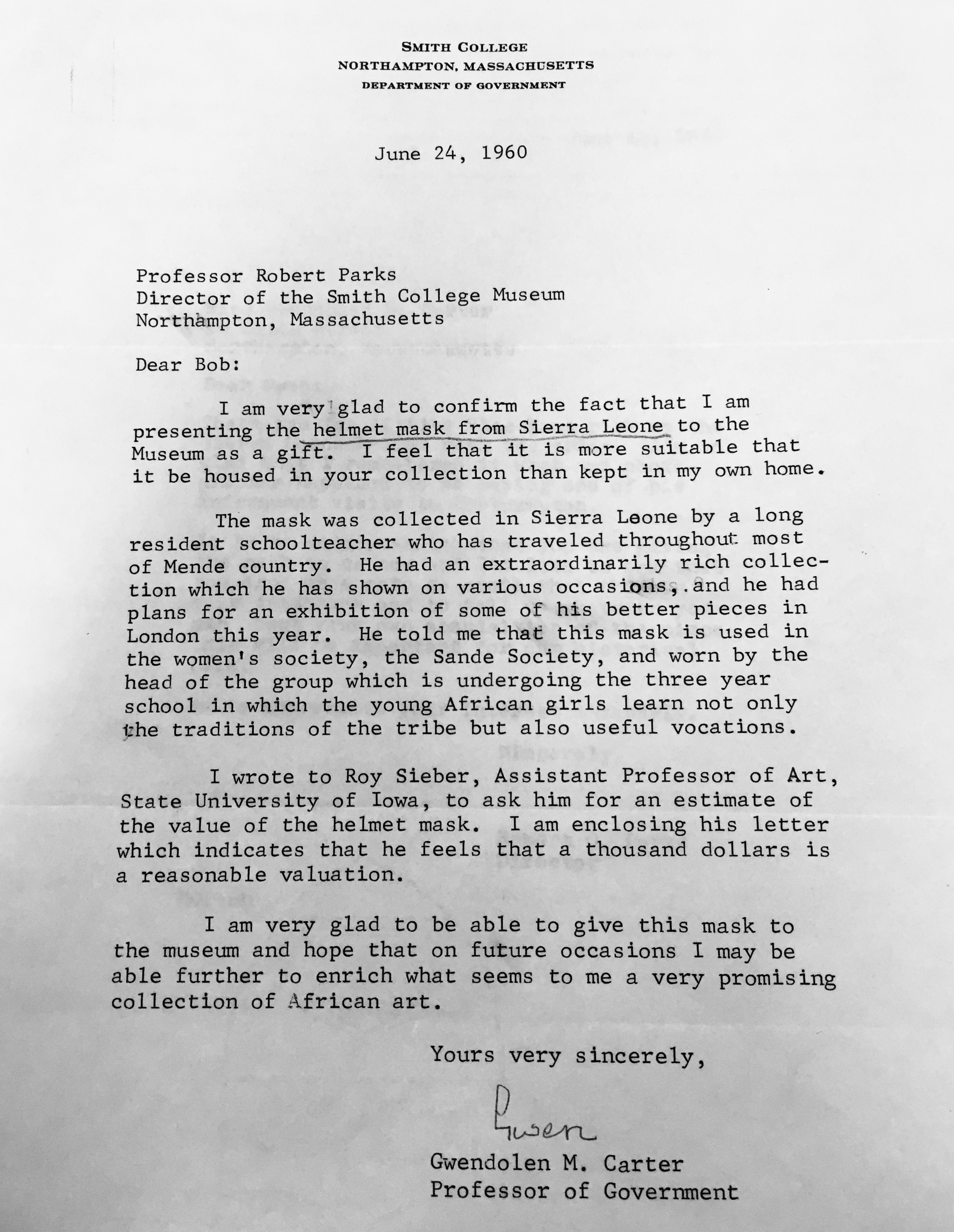
This mask is an emblem of the Sande, a women’s secret society established among communities of Mende and related peoples in Sierra Leone and Liberia, as well as London and the United States. Senior women in Sande are responsible for bringing girls through puberty and educating them into and throughout their adult lives. The mask would have been worn with a black raffia robe by a leading official of the society as a personification of Sowo, the water spirit of the Sande Society.
As Sande’s spiritual exemplar, Sowo’s features may have derived from the female physique. Details such as the elaborate coiffure, delicate and calm facial expression, and neck rings are all naturalistic marks of feminine beauty and distinction in African culture. Also, the feminine design relates to life having sprung from waters, women’s wombs, and the earth’s soil, reinforcing Sowo’s role as the supreme spiritual leader and ennobling force of Sande. [1] On top of that, a finely carved sowo mask contains various symbolic features:
Full forehead = Wisdom, intelligence
Somnolent, downcast eyes = Modesty
Shining black color = Mystery
Neck rings = Health and prosperity (as well as the mask’s mythic rise out of the water)
Birds = Messengers between spirits and humans
Cowries = Wealth
White cloth = Ritual purity
Fish, snakes, tortoises = The riverine home of sowo
Antelope horns and lasimo (scripture) = “Good medicine” (hale nyande)
Three-legged cooking pot = represents sowo as a repository of women’s knowledge, and as a symbol of domesticity
What kinds of symbolic features can you find in this mask?
A renowned artist, Pessima often created masks on commission for women who wore the masks during dance celebrations and judicial hearings, however, this mask was made for a resident English art teacher, Guy Massie-Taylor, who has traveled throughout most of Mende country, and it was never used by a Sande woman. As a result, the mask does not look as shiny and polished as if it has been worn and taken care of. However, the mask is equally as important as a valuable example of a culturally important object. But the alternation of the purpose of this mask as it entered the American market for African objects tells us a great deal on how Western art collectors disrupted the traditional forms of African art and symbolism.
Can you think of other examples where the purpose of one object is altered when it is taken to another environment?
[1] Glaze, A. J., Scheinberg, A. L., Krannert Art Museum. (1989). Discoveries: African art from the Smiley collection. Urbana: Krannert Art Museum.

